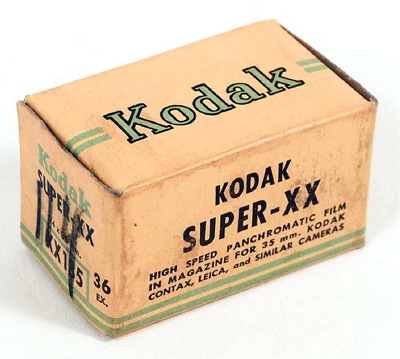 [Our long-term research project, Alternate History: Robert Capa on D-Day, continues with this four-part Guest Post by military historian Charles Herrick. It results from the Capa D-Day Project team’s determination to consider all possibilities, follow all leads, answer all pertinent questions and, to the extent possible, tie up any remaining loose ends.
[Our long-term research project, Alternate History: Robert Capa on D-Day, continues with this four-part Guest Post by military historian Charles Herrick. It results from the Capa D-Day Project team’s determination to consider all possibilities, follow all leads, answer all pertinent questions and, to the extent possible, tie up any remaining loose ends.
In preceding Guest Posts, military historian Charles Herrick tracked Robert Capa’s D-Day films from Omaha Beach to LIFE‘s London office, then deconstructed the “Legend of the Lost Film” by other D-Day photographers and cinematographers, in the process of which he described in detail the ramshackle, hopelessly inadequate system put in place by SHAEF to gather and transport journalistic product from the Normandy coast to London at the outset of the invasion.
Based on that research, Herrick concluded — among other things — that LIFE staffer Bob Landry, assigned to Utah Beach, did not land there on D-Day (June 6) but instead on D+2 (June 8). In all fairness, Landry himself never claimed on the record to have landed on the morning of the invasion.
According to his widow, Doreen Landry Millichip, whom I interviewed for this project, Landry never spoke or wrote about the war: “WWII was an experience he preferred to put behind him.” The assumption that he did land on D-Day rests on inferences drawn from various accounts by John Morris of LIFE magazine and a single sentence in a post-D-Day radio broadcast by CBS correspondent Larry LeSueur, a member of Edward R. Murrow’s team.
When Ms. Millichip objected to Herrick’s conclusion re her late husband’s role in the invasion coverage, I asked Herrick to reconsider the photographs Landry made during the early days of the invasion and Morris’s inconsistent accounts of Landry’s role in LIFE‘s coverage, as well as LeSueur’s broadcast, comparing these with military documentation from the archives.
This does get granular, perhaps exceedingly so (though you’d think that anyone with a deep interest in matters photographic would have an appreciation of and appetite for grain). But disentangling a hairball of such density requires this degree of nitpicking, especially if you hope to persuade skeptics that you have indeed covered all the bases. I’ve divided it into what I hope you’ll find digestible portions.
Part 1 of Herrick’s analysis appears below. Click here for part 2. — A.D.C.]
•
Landry and LeSueur, Reconsidered (1)
by Charles Herrick
In a previous series of posts, I examined — and debunked — the myth asserting that almost all the film from the American beaches on D-Day accidentally got dropped overboard and lost. As part of that effort, I sought to explain the absence of any surviving D-Day film from another of Life’s staff photographers assigned to cover the invasion, Bob Landry, who was scheduled to land on Utah Beach.
Landry left no public account of his arrival on Utah Beach, and apparently spoke very little about it (even to his wife) before he died suddenly some 60 years ago. After considering all the evidence available, to include the debunking of the “Legend of the Lost Film,” I concluded that Landry most probably numbered among the group of press and public-relations personnel aboard a landing craft that suffered a fire during the Channel crossing and was forced to return to port. The members of that party didn’t actually step ashore on Utah Beach until 8 June (D+2). Although I couldn’t state that conclusion as a verifiable fact, it seemed to be the only logical explanation once all the factors had been analyzed.
Subsequently, Landry’s widow, Doreen Landry Millichip, contacted me to indicate that she strongly disagreed with this conclusion. Ms. Millichip has featured earlier in this project, having been interviewed by A. D. Coleman in 2016 for this project. She met Bob Landry in 1958 and was briefly married to him in 1960 before he died, tragically, ten days after their wedding. Although Landry did not leave any record of his D-Day experiences, Ms. Millichip is adamant that he told her he did land on D-Day.
To support this recollection, she provided two sources. That gave me cause to stop, fall back, and reassess. Obviously, it isn’t possible to evaluate what may have verbally passed between husband and wife 60 years ago, but we can certainly analyze the sources she provided. This series of posts will attempt to do that.
•
Let me preface my analysis by stating that I consider Bob Landry one of the best, and certainly most underrated, of the WWII combat photographers. His keen nose for a story led to him being embedded with the U.S. Pacific Fleet when Pearl Harbor was attacked, at a time when most of his fellow photographers were only vaguely aware of the looming crisis. (Although he was at sea when the attack hit, thus not in position to document that event.) He covered several fighting fronts and produced excellent images, all without any of the self-promoting bombast common in some high-profile photographers.
And he had a great eye for a picture; he was, after all, the photographer who captured the iconic image of Rita Hayworth in 1941 (as well as making memorable images of many other Hollywood notables both before and after the war). He also served as a technical advisor on movies, such as Alfred Hitchcock’s “Rear Window.” In short, he was talented, courageous, and a man to be admired. I do not believe my suggestion that he missed the D-Day landing — and that only due to circumstances beyond his control — in any way detracts from his legacy or his memory.
John Morris, Once Again
The first source Ms. Millichip cited was a lengthy article by John Morris published in the Summer 1982 issue of the Society for Photographic Education’s journal exposure. (“John G. Morris: A Photographic Memoir,” exposure 20:2, March 1982, pp. 3-33. Click here for a pdf download of this issue.) Sent to London by Life in advance of the invasion, John Morris, an assistant photo editor for the magazine, would later style himself the bureau chief for Life’s photographers stationed in London before and during the Normandy invasion. This was clearly an exaggeration of his actual duties.
Those who have followed this project are well aware of the problematic aspects of Morris’s many recountings of the D-Day saga as it affected Life‘s coverage thereof. For more than six decades he pushed the story that the bulk of Robert Capa’s D-Day photos were lost when a darkroom accident melted the emulsions. That story was proven technically impossible through the combined efforts of A. D. Coleman, Rob McElroy, and Ross Baughman. In light of this revelation, Morris changed his story shortly before his death in 2017. In fact, Morris’s versions of events have varied considerably over the years, making it often difficult to determine which, if any, might be reliable.
In the relevant passage of the exposure article Morris stated, “About noon we got word that Bob Landy’s [sic] film was on the way; it never arrived.” That would have been noon on Wednesday, 7 June, the day after D-Day. All press film returning from the beaches was turned over to special press message centers that had been established at various embarkation ports in the UK.
Upon receipt of the film from the beaches, the press message centers called the appropriate periodicals and news bureaus (the latter included Acme Pictures, Associated Press, and United Press) to alert them that film had arrived and was being forwarded to the British Ministry of Information (MoI), through which it would be initially screened and censored before being turned over to the periodical or bureau for authorized publication.[1]
If Morris’s exposure claim were accurate, it would indicate that Landry indeed landed on D-Day, in which case his film must have been carried back on the first returning convoys. Those convoys did reach the UK on the morning of 7 June; it was aboard these vessels that two other photographers (Bert Brandt and Capa, both coming from Omaha Beach) personally carried their film back to the UK.
The problem with Morris’s many interviews over the years is that they contain more melodrama than factual accuracy. In the very same exposure article, for instance, he stated that 20 years after the Normandy invasion he unsuccessfully tried to dissuade Capa from taking the fatal assignment in Indochina that ended his life. But Capa actually died in Indochina in May 1954, only 10 years after Normandy. Morris had difficulty keeping his timelines and stories straight.
So what are we to make of Morris’s claim in exposure that about noon on June 7 he received official word Landry’s film was on the way? To begin with, it represents the only instance in many decades of first-person articles, profiles, and interviews — published both before and after the exposure interview — in which Morris mentioned receiving any such notice about Landry’s film.
In fact, his 1998 autobiography, Get the Picture, directly contradicts it. According to that book, by 6 p.m. on 7 June he had received no word about film from any of the beaches;[2] when he finally heard (at about 6:30 p.m.) that Capa’s film had arrived in Portland and was on its way to London, he felt greatly relieved and rushed to call E. K. Butler, the head of the photo pool, with that good news.
But in this autobiography he made no mention of hearing that Landry’s film was on its way, more than 6 hours earlier! Nor did he mention calling the photo pool editor with that good news, as he surely would have done. Which indicates that he did not receive any such news. (Richard Whelan’s two books on Capa — Robert Capa: A Biography and This is War! Robert Capa at Work — contain substantially the same version of events, with no mention of Morris receiving word about Landry’s film on Wednesday. The exposure article is the sole instance in which Morris ever mentioned hearing anything about Landry’s film on the day after D-Day.)
Beyond these points, the key question is this: How could Morris even have been informed that Landry’s film was on the way? Operational radio circuits would not have carried that message from Utah Beach; they were overloaded with tactical traffic, and press access to these radios had been cut off. Worse, the Utah Beach press support team’s dedicated radios did not land until D+2, so no one at the beachhead could have sent Morris that message on D+1. The only source for a call about Landry’s film being “on the way” would have been a press message center at an embarkation port back in the UK, and they would have called Morris only if they had his film in hand.
However, the common theme running through all of the stories concerning Landry’s “lost D-Day film” — including every other version recounted by Morris himself — is that the film was dropped overboard somewhere between leaving the beach via a courier and that officer boarding a ship, or else lost when a dispatch boat sank en route to a British port. (No evidence supports either of those narratives, as demonstrated in my earlier series of posts.) Morris’s own explanations, therefore, preclude the possibility of a press message center ever receiving Landry’s film, so none would have had any reason to call Morris. All of that simply makes no sense.
To repeat a point I made in part 3 of the “Legend of the Lost Film” series, Morris consistently asserted over a period of seven decades that Landry’s D-Day film had been accidentally lost. More than that, he variously proposed or implied at least three different causes for the loss of that film, any of which would have precluded that film from reaching a press message center. The lone reference in the exposure article simply cannot eradicate that much of Morris’s published record.
So I don’t find this isolated assertion from Morris to be credible. I don’t see a logical sequence of events by which its claim would even be feasible.
Larry LeSueur, “Murrow Boy”
The second indication that Landry did actually land on D-Day comes from the invasion accounts of Larry LeSueur (1909-2003), a CBS broadcast journalist and one of Edward R. Murrow’s team in London. [Editor’s note: This cluster of journalists became known as the “Murrow Boys” or “Murrow’s Boys.” Among those who went on to greater glory: Eric Sevaried, Howard K. Smith, Charles Collingwood, and William L. Shirer. — A.D.C.] There are three principal sources for LeSueur’s story; recorded over a span of five decades, they predictably vary somewhat in their specifics.
LeSueur’s first account took the form of a radio broadcast he recorded in Normandy on D+13 — that is, two weeks after D-Day.[3] It is a brief account, not terribly detailed, but with a very positive tone, with U.S. troops described as fighting bravely as they advance and German troops portrayed in broadly negative terms. In it he mentioned Landry as present on the beach with him early on D-Day:
“The stunned Germans defending the beach were being gathered in, and I remember their tall, blond Nazi captain. Dressed immaculately, he was, and as arrogant as ever. He refused to lie down with the rest of his men, although German shellfire was hitting the beach, and when my colleague Bob Landry of Life magazine tried to take his picture, the Nazi officer turned his back on him and on the whole American landing with deepest scorn.”
Although LeSueur didn’t mention stepping ashore with Landry, this passage, if accurate, would place Landry on Utah Beach before noon on 6 June.
LeSueur’s second version came in a 1984 interview with Carol Bennett, published a few days before the 40th anniversary of D-Day.[4] This account briefly covers the period immediately leading up to D-Day and provides greater detail in many respects, although it does not mention Landry. Some of these additional details fit with known facts, while other details are so obviously incorrect that they call into question whether LeSueur was actually present on the Normandy coast on D-Day. For instance, in this interview he stated:
“Twenty five tanks were supposed to land with us, but most of them sank in the rough waves. They had canvas all around them and propellers in the rear, but they couldn’t withstand the force of the waves and the storm.”
LeSueur was referring to the duplex-drive (DD) amphibious tanks. Over at Omaha Beach these tanks did incur severe losses, due to their foundering in the rough seas. But that did not occur at Utah Beach. Only one of the 32 DD tanks at Utah foundered. In this passage LeSueur simply borrowed from the popular image of carnage at Omaha Beach, incorporating that into his supposed Utah Beach experience.[5] So the details contained in this interview cannot necessarily be taken at face value.
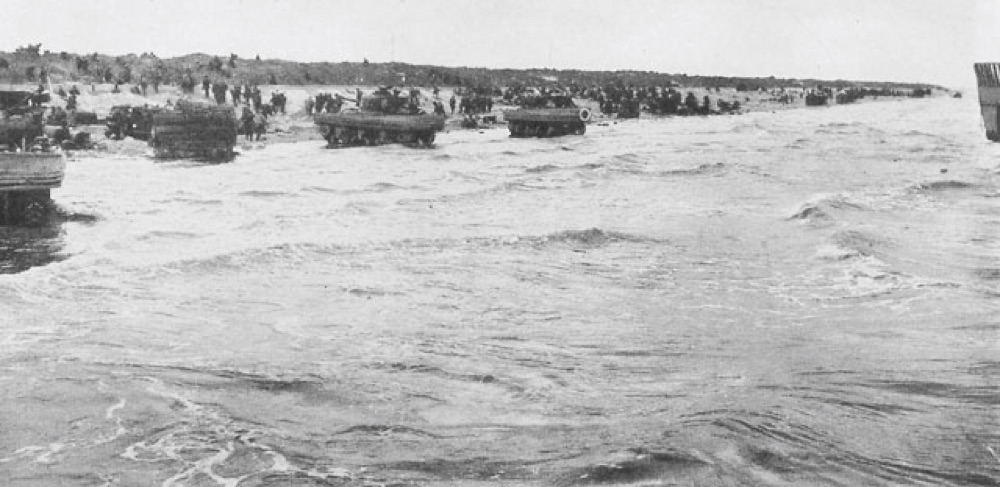
Figure 9. Photo of initial waves, including the duplex-drive (DD) tanks of the first wave, at Utah Beach shortly after H-Hour. Photo by 165th Signal Corps Photo Company.
The third source is The Murrow Boys,[6] a flattering tribute to the CBS crew working for Edward R. Murrow during the war. This volume includes another take on LeSueur’s D-Day activities, and while it relied on earlier accounts, it also toned down some of the more extreme claims. This version explicitly has LeSueur and Landry stepping ashore together, apparently extrapolating from that single sentence in LeSueur’s D+13 broadcast.
Each of these accounts deserves scrutiny. Let me preface this by saying that it’s been my unhappy experience to discover that the majority of first-person D-Day stories are to some degree inaccurate. Often this is because the individual experienced such a narrow view of the massive operation that he misinterpreted what he saw. In other cases, it is a result of fading memory or unintentional exaggeration. And then there are the cases in which people alter the facts to enhance their reports or their reputations. All too many of the D-Day correspondents fell into that last category.
So it should come as no surprise that a correspondent’s efforts might prove not entirely accurate, or even less than honest. The sad truth is that a rash of inflated and in some cases totally fabricated reportage came out of D-Day. …
Notes:
[1] The British Ministry of Information (MoI) was responsible for press censorship in the UK, in close cooperation with the Supreme Headquarters, Allied Expeditionary Force (SHAEF).
[2] Morris carelessly confused his timelines again when summarizing what he knew on Wednesday, 7 June. He dismissed the value of the film from another Life staffer, George Rodger, who, in Rodger’s own words, “walked ashore in a blaze of anti-climax” at Arromanches on Gold Beach, where the British forces met with minimal resistance. And he stated that Landry’s film got lost. But Morris would not hear from either of those men for another day or two and had no idea what their film contained or what might have happened to it. That sleight of pen was merely designed for dramatic effect, leading the reader to believe that everything depended on Capa coming through. In fact, on D+1 Morris was anxiously waiting for anyone’s invasion reportage to arrive so that he could meet his imminent deadline; Capa’s film just happened to get there first.
[3] https://www.billdownscbs.com/2015/07/1944-murrow-boys-on-d-day.html. LeSueur’s recording and transcript come toward the bottom of the page. Part of the recording is missing (at 1:03); the transcript marks this with an “inaudible” notation (fifth paragraph, second sentence).
[4] Carol Bennett, “The Euphoria of Surviving the Landing, With Typewriter,” Washington Post, June 3, 1984.
[5] In the first 15 minutes of the landing, 56 tanks were scheduled to touch down, including 32 duplex-drive (DD) tanks, 16 standard tanks and 8 standard tanks with dozer blades. Forty-seven of these 56 did land; the other 9 got lost at sea. Of the fate of the 32 duplex-drive tanks, there is minor confusion. Utah Beach to Cherbourg (6 June-27 June 1944), published by the Center of Military History, United States Army, Washington, DC, 1990, stated that 4 amphibious tanks were lost when their LCT was sunk by a mine, but the other 28 swam ashore safely (p. 44, note). The First US Army Report of Operations, 20 October 1943 to 1 August 1944 stated that 30 amphibious tanks were launched and 29 made it ashore (p. 41). Joseph Balkoski (Utah Beach, June 6, 1944, p. 205) seems to have reconciled these reports, noting the four lost with the sunken LCT, and one tank swamped during its swim in; this matches the 70th Tank Battalion’s Narrative Report of Engagements for this period.
[6] The Murrow Boys, by Stanley Cloud and Lynne Olson (Boston: Houghton Mifflin Company, 1996). Updated edition published 2009.
•
Text copyright © 2022 by Charles Herrick. All rights reserved.
•
(For an index of links to all posts in this series, click here.)
•
 Charles Herrick joined the U.S. Army in 1970 and graduated from the U.S. Military Academy at West Point in 1974. Commissioned in the Infantry, he earned the Ranger tab and Master Parachutist’s wings. He served in a variety of positions from company grade officer to the Pentagon. He earned the Combat Infantryman’s badge while assigned as the Operations Officer of the 193rd Infantry Brigade in Panama in 1989, and later graduated from the U.S. Army War College.
Charles Herrick joined the U.S. Army in 1970 and graduated from the U.S. Military Academy at West Point in 1974. Commissioned in the Infantry, he earned the Ranger tab and Master Parachutist’s wings. He served in a variety of positions from company grade officer to the Pentagon. He earned the Combat Infantryman’s badge while assigned as the Operations Officer of the 193rd Infantry Brigade in Panama in 1989, and later graduated from the U.S. Army War College.
Since retiring from the Army in 1996, Herrick has continued to work on defense issues as a contractor in East Asia, Latin America, the Balkans, Africa and Central Asia. He holds an MBA from the University of California at Los Angeles. He lives in California with his wife, where he pursues his passion for military history. To contact Charles Herrick, click here.



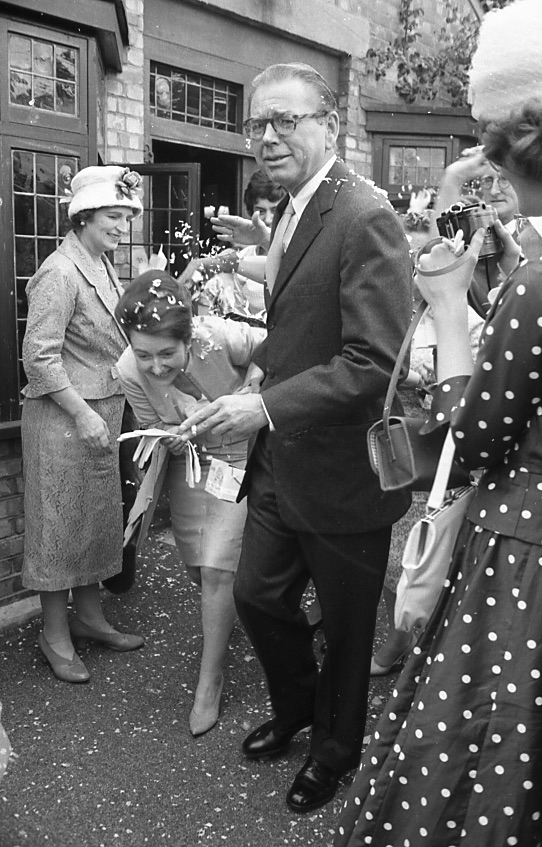

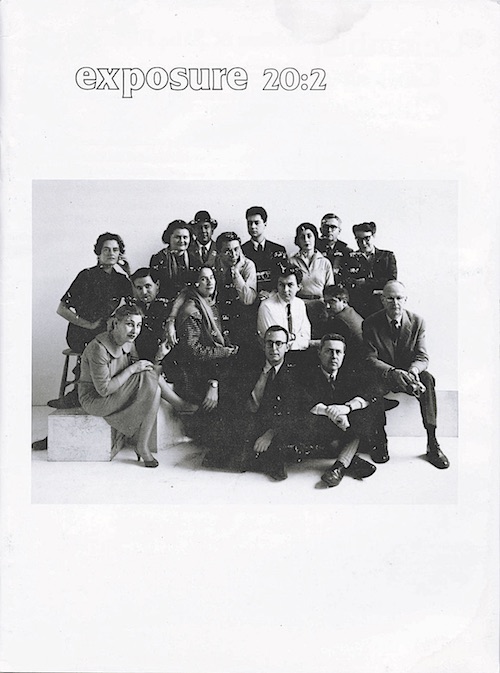
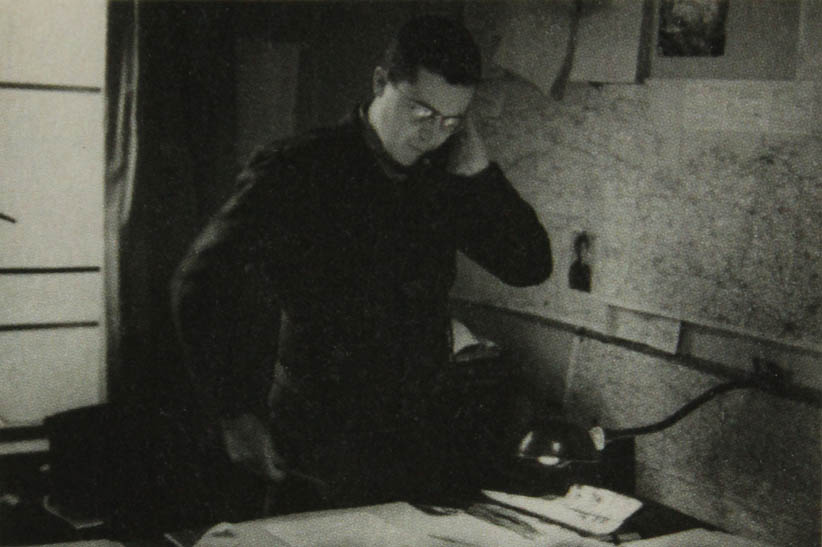
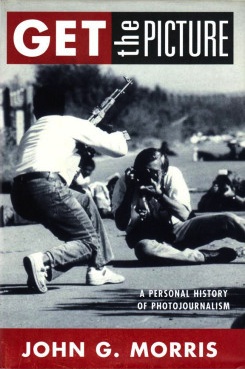
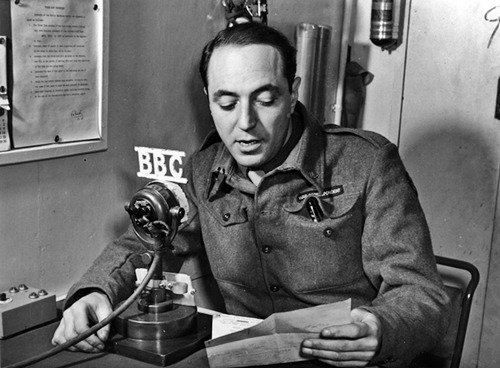




Given the apparent shoddiness and carelessness of the accounts of the D-Day invasion, it would be extremely interesting, if perhaps impossible at this or even a future time, to learn of what measures had or have been put in place to ensure a more accurate account of current events. According to accounts by the journalist Chris Hedges, among others, if anything movement has been toward increased opacity and even censorship of views potentially contrary to official narratives.
As Herrick and I have pointed out in several earlier posts, the Allied setup for press coverage of the early days of the invasion favored amplification of the “fog of war.” This includes everything from a single courier(!) assigned to retrieve all press material from Omaha Beach and Utah Beach on D-Day to the MoI censorship system.
I don’t speak for Herrick on this, but I’ve concluded that this “shoddiness” was deliberate, a protective cocoon around Operation Fortitude South, the top-secret disinformation campaign SHAEF had underway to convince the Germans that Normandy was a feint.
As I point out in this article, which I wrote and published elsewhere as a sidebar to this investigation, there were no binding, agreed-upon, industry-wide codes of ethics to which journalists and photojournalists and their editors and publishers subscribed, or even paid lip service, during WWII. “Ethics in Photojournalism Then and Now: The Case of Robert Capa,” Media Ethics, Spring 2016.
Given the mandatory collaboration with the military and the forthrightly propagandistic nature of much Allied press coverage in all media, if accused of “carelessness” — or even bald-faced lying — Larry LeSueur would probably have argued that however fictionalized his D-Day account might have been, it did more to raise morale on the home front than a confession that he missed the landing would have done. You couldn’t get away with that today, nor for some years past, but those were different times.
Perhaps because I’ve spent the past eight years delving into military history (which had never previously interested me), and perhaps also because democracy in Europe now hangs in the balance, I have tracked in detail from its beginning the Russian invasion of Ukraine. Reading coverage in the mainstream media, here and abroad. If you discount disinformation from the Kremlin, Russian press, and their Fox News/MAGA supporters, the flow of both data and information proves steady and reasonably reliable — confirmable quickly and also quickly adjusted for errors. Not much latitude for making shit up, unless you have absolute control of the media, as in Putinland.
For anyone interested in getting granular, the best detailed analysis of the Ukraine situation I have found appears at the Daily Kos. In-depth scrutiny by people who know what they’re talking about, jargonized minimally. Even I can follow 95 percent of it. Contributors include ex-military, ex-intelligence, war buffs, even people in Ukraine. Updated at least daily, breaking faster than the MSM, and well ahead of them in anticipating next moves.
And that’s the real difference between now and WWII: Citizen journalists with the ability to respond instantly to new developments and to communicate their analyses globally and immediately. Nothing like it to keep the MSM honest and on its toes.